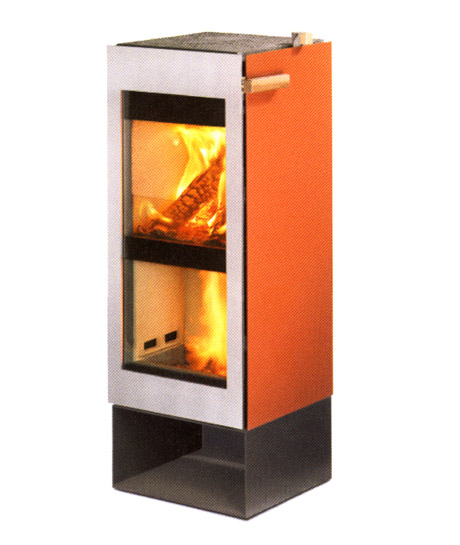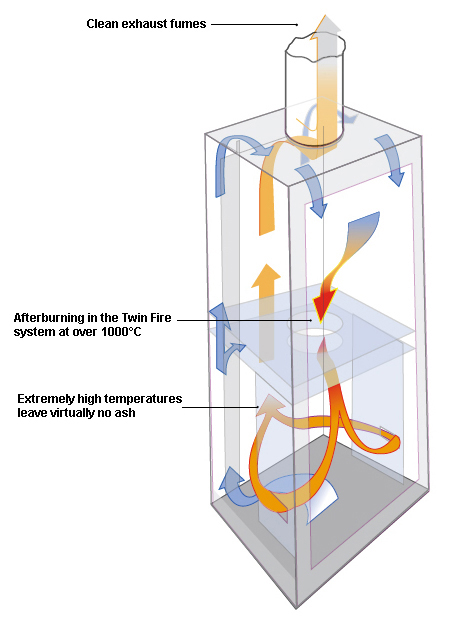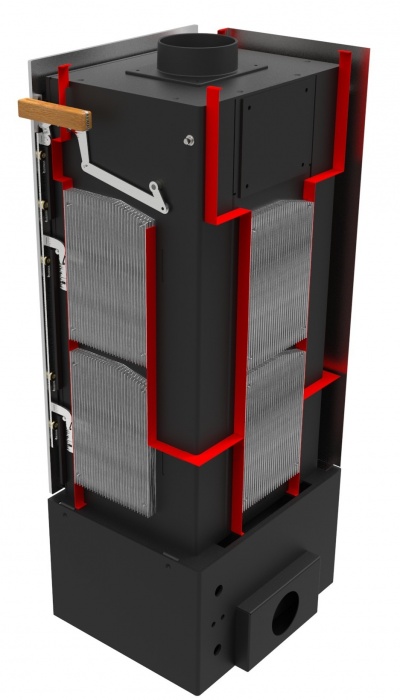Specht uses PTC Creo to re-invent wood heat, with a two-chamber design that raises efficiency and lowers emissions.
In many regions with cold winters, wood heat remains a primary heat source. Yet for years it has not been able to compete ecologically or financially with oil, gas, and electricity for home climate control. Compared to modern systems, wood stoves are dirty and inefficient.
 But PTC Creo customer Specht is now challenging those assumptions. Located in Hatzfeld Germany, Specht develops and manufactures the Xeoos, a modern wood-burning stove gaining notice in Europe and the U.S. for its unique Twinfire design. The Xeoos Twinfire is a stove with two flames burning in two directions: one upward and one downward. The two-chamber design of the Xeoos Twinfire heats the wood in a mostly oxygen-free compartment, using fresh air in its second chamber to move the heat and flame. That means the system can be operated without a fan or electricity. The result is more heat, better efficiency, and ultra-low emissions compared to traditional stoves.  Compare these numbers:
* Omni-Test Labs, USA These low emissions generally exempt Xeoos stoves from the limits set in smoke control areas, as they fall well below any government limit. Next-generation Xeoos heats waterIn 2012, Specht introduced the Xeoos Aqua, which uses the same double chamber technology to heat water for home heating and household use. The Aqua is equipped with a heat exchanger that works like a car radiator, circulating water through the wood-heated chambers. Users can vary the stove’s temperature control from 0° to 100° Celsius, (32° to 212° Fahrenheit)and it can be connected directly to the existing heating system.  Specht has received multiple regional, national, and international awards including the Home Building & Renovating Product Excellence Awards 2011 (UK) and the Energy Award 2012 (Germany). The product is both practical and aesthetically pleasing. The product’s modernist design is possible due to the talents of Frank Werner and the team at Specht. Werner, technical manager at the company, is responsible for the design and development of the new Xeoos Aqua; he credits PTC Creo 2.0 for the product’s success. “We used PTC Creo 2.0 and its sheet metal design capabilities to create the new stove, casing, and duct work,” Werner says. “We were working with Pro/Engineer Wildfire 2.0, and it’s been very easy to move to PTC Creo. We just use the search function to help map the Pro/E commands to PTC Creo.” He says that because PTC Creo is fluid and intuitive, it’s improved the overall speed of design for the company. |





